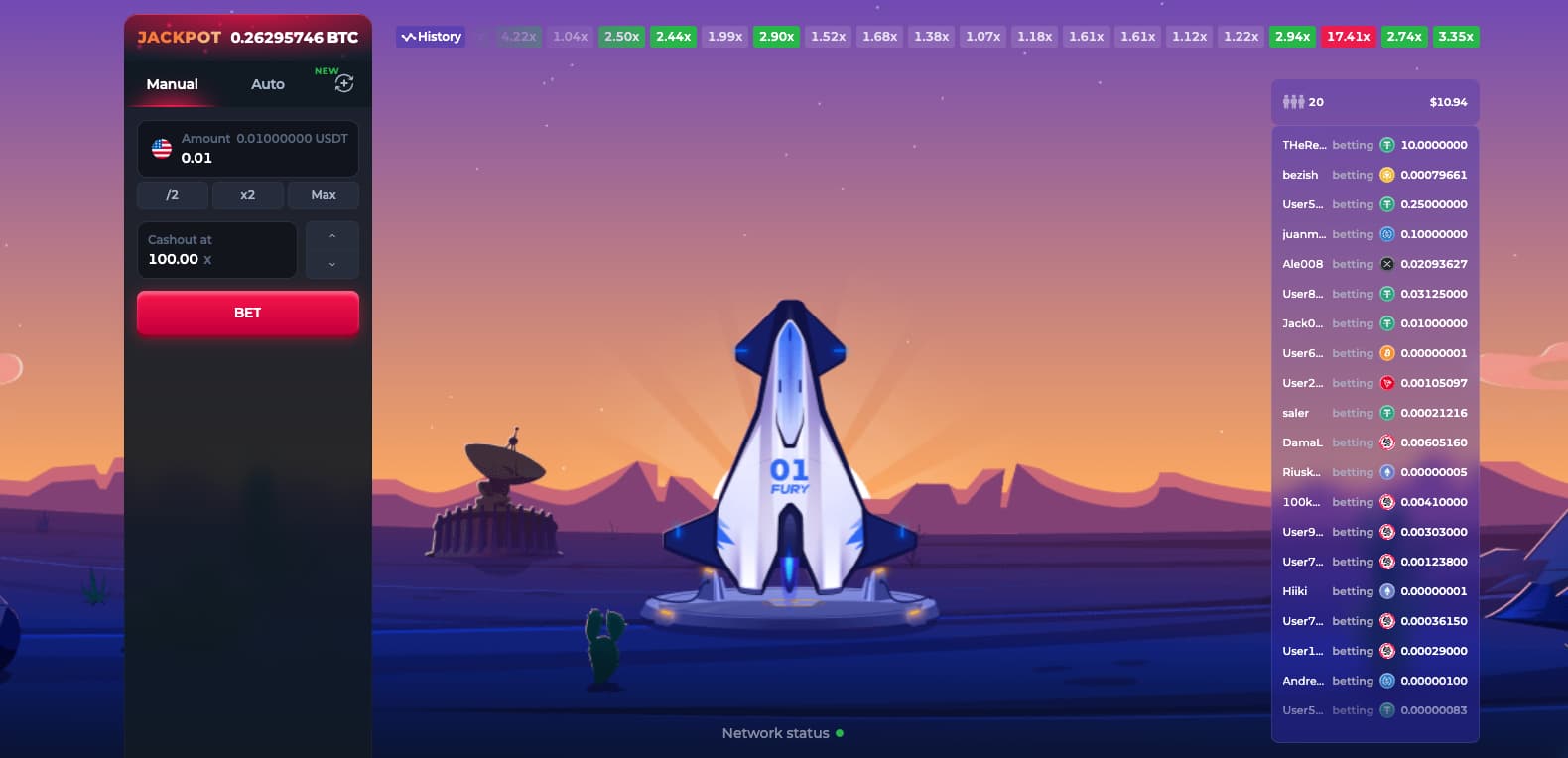
A famous study once found that contacting a new web lead within 5 minutes makes you 100 times more likely to connect with them than if you wait 30 minutes . Those odds sound like something from a casino game, not a sales office. In fact, chance plays a huge role in both fields. Whether you’re rolling dice or chasing leads, success often comes down to playing the odds wisely.
In lead management, every prospect’s action (or inaction) can feel like a roll of the dice. But what if we could predict those “rolls” a bit better? This article explores how mathematical models and probability principles from online dice games – particularly Dice game – can be applied to lead management and behavior prediction. And don’t worry – no one’s actually suggesting you roll dice to close deals (if only it were that simple – and that fun!).
BetFury’s Original Dice Game: Where Bitcoin Meets Chance
BetFury’s in-house Dice game is a flagship example of simple mechanics wrapped in clever design. The BetFury Bitcoin Dice Game lets players wager cryptocurrency on a predicted dice roll outcome. It works like this: you choose a target number (say 50) and bet whether the game’s random number generator will roll under or over that target. The allure lies in adjusting your risk and reward: pick a low target (e.g. roll under 20) and you have a small chance to win but a big payout if you do. Pick a high target like roll under 80 and you’ll win more often, but each win pays less. In essence, players control their odds.

Probability, Odds, and Risk: From Rolling Dice to Managing Leads
On the surface, gambling on a dice roll and pursuing a sales lead seem worlds apart. One happens in a glitzy crypto casino, the other in CRM software and sales calls. But look closer and the same principles of probability and risk management apply:
• Uncertainty: Every dice roll is uncertain, just like every sales call outcome. Neither the gambler nor the salesperson knows the result in advance.
• Odds Matter: A dice game quantifies odds precisely (like a 20% win chance). Likewise, good sales teams estimate the odds of a lead converting (even if informally: “this deal feels like a long-shot” equates to low odds).
• Risk vs. Reward: In betting, a riskier wager can pay out more. In business, a risky lead (maybe an undecided big client) could yield a huge contract. Both decisions weigh the potential payoff against the likelihood of success.
• Strategy: Successful gamblers and savvy sales managers both follow strategies. Random betting or random selling isn’t as effective as a calculated approach.
• Independent Trials: Each dice roll is independent – previous rolls don’t influence the next. Similarly, each lead is an independent opportunity. Past rejections don’t make the next call more likely to connect (a reminder to avoid the “gambler’s fallacy” in sales too!).
To illustrate, let’s compare a lead’s conversion probability with a dice roll’s odds. Here are a few lead scenarios with their conversion probabilities, alongside an equivalent dice bet:
| Lead Scenario | Estimated Conversion Probability | Comparable Dice Win Chance | Typical Dice Payout (approx.) |
| Cold lead (just a casual inquiry) | 5% chance to convert | 5% (roll under 5 on a 1–100 die) | ~19x your bet (high payout) |
| Warm lead (engaged, showed interest) | 20% chance to convert | 20% (roll under 20) | ~5x your bet |
| Qualified lead (good fit, budget) | 50% chance to convert | 50% (roll under 50) | ~2x your bet |
| Hot lead (ready to buy) | 70% chance to convert | 70% (roll under 70) | ~1.4x your bet |
In both cases, a higher chance of success means a lower relative payoff per attempt. A 5% chance lead is like a long-shot bet: unlikely to pay off, but if it does it could be a big win (perhaps a large contract). A 70% chance hot lead is akin to a safe bet with a modest reward – you’ll likely close the deal, but it might be a smaller sale.
Crucially, gamblers diversify bets and manage their bankroll to ride out losses. Sales teams do the same with leads: they work many prospects in parallel, knowing that some percentage will “hit” eventually. No one in either gambling or sales bets it all on one outcome – that’s just too risky. By understanding the odds, whether it’s a 1-in-20 chance or a 1-in-5 chance, professionals can make better decisions on where to spend their time and money.
Predictive Lead Scoring: Using Data to Predict Outcomes
So how do businesses quantify a lead’s chance of converting? The answer is predictive modeling. Modern CRM systems crunch past customer data with machine learning. They figure out which factors signal a lead is likely to turn into a sale. Research backs this up: one study found predictive lead scoring models significantly more effective than traditional human-based scoring, leading to better sales performance .
Here’s a concrete example: Harvard researchers found that the number of content pieces a lead engages with can statistically predict how likely that lead is to become a customer . If a prospect downloads several whitepapers and watches a demo, the model might give them a high score (say an 80% chance). That’s like an 80%-odds bet – any salesperson would jump on it, because the data shows a strong chance of success.
Predictive lead scoring essentially turns lead management into a numbers game (minus the neon lights and casino chips). It assigns each lead a score or probability. Sales teams can then prioritize follow-ups by those scores, focusing on the leads most likely to convert. But even an 80% probability lead can fall through – just as a 90% odds bet can lose. Probability isn’t certainty, but it sure beats flying blind.
To make the most of this approach based on probability, lead managers can take a few cues from gambling pros:
1. Calculate Expected Value: Just like a gambler calculates expected return, consider a lead’s expected value (probability × deal size). For example, a 20% chance lead on a $10,000 deal has an expected value of $2,000. Focusing on expected value can guide you to the most lucrative opportunities, not just the most likely wins.
2. Spread Your Bets: Don’t put all your chips on one lead. A balanced pipeline is safer. Mix high-probability leads (small wins) with a few long-shots (big potential). That diversifies your “bets” and avoids losing everything on one unlucky prospect.
3. Iterate and Learn: After each “roll” (lead outcome), update your strategy. If certain lead profiles convert often, focus more on them. If a tactic isn’t working (just like a betting strategy that fails), change it. Over time, your model and your team’s intuition will improve, pinpointing what a winning lead looks like.
The table below compares how a data-driven sales team and a dice gambler each use odds and strategy:
| Aspect | Data-Driven Lead Management | Dice Game Play |
| Odds Known vs. Estimated | Uses a predictive score (estimated probability, e.g. 30% chance a lead converts) based on data patterns. The true odds aren’t 100% certain, but the estimate guides decisions. | Knows the exact probability of winning (e.g. 30% chance if betting on under 30). The odds are mathematically defined and fixed for each roll. |
| Information Used | Rich data on the lead (behavior, demographics, past interactions) to gauge quality. More data can improve the accuracy of the prediction. | Limited information – mainly the chosen win chance. Past rolls don’t affect future ones (each roll is independent), so strategy relies on balancing risk and reward. |
| Decision Strategy | Prioritize leads with higher scores first. Allocate more time and resources to high-probability, high-value leads. Low score leads might get less effort or nurturing until they show more interest. | Adjust bets based on desired risk. Might bet smaller amounts on low-odds (risky) bets and larger on high-odds (safe) bets. Some use betting systems (Martingale, etc.) to manage streaks, though these don’t change the underlying odds. |
| Risk Management | Set thresholds (e.g. only forward leads to sales if score > X%). Avoid chasing every single lead (which can waste time on long-shots). Ensure a healthy pipeline so one lost deal won’t tank the quarter. | Set loss limits and win targets. Don’t chase losses blindly (know when to walk away). A disciplined bettor avoids going all-in on a single roll, instead managing bankroll to survive losing streaks. |
| Feedback Loop | The model learns from new outcomes: when leads convert or don’t, the system updates to refine future predictions. Team also learns which tactics work best for high vs. low probability leads. | If desired, adjust strategy after outcomes (though the probability of dice stays constant). For example, if a strategy is causing losses, a player might switch tactics or take a break. Each roll doesn’t inform the next roll’s odds, but it informs the player’s approach to betting. |
Turning Chance into Opportunity
At first glance, sales leads and casino dice seem to have nothing in common. But they share a core truth: you can’t control outcomes, only probabilities. By embracing that, iGaming pros and CRM specialists can learn from each other. Gamblers can appreciate the value of data-driven strategy. And sales leaders can think in terms of odds and expected value instead of pure gut feeling.
Every lead is a bit of a gamble – but it’s one you can manage intelligently. Just as Dice lets players dial in risk and use strategy, smart lead management leverages data and probability to maximize returns. The next time you look at a list of new prospects, you might feel a hint of that casino thrill. The dice are about to roll – but armed with data, you’re ready to bet on the right outcome.

Mark is an experienced internet entrepreneur and marketer whose career in lead generation started relatively recently but has quickly gained momentum. He/she has in-depth knowledge of internet marketing and customer acquisition strategies.

